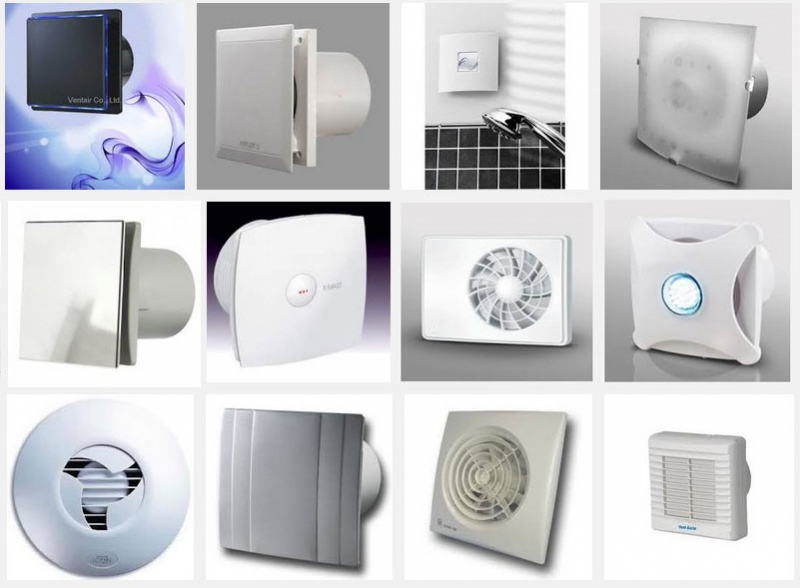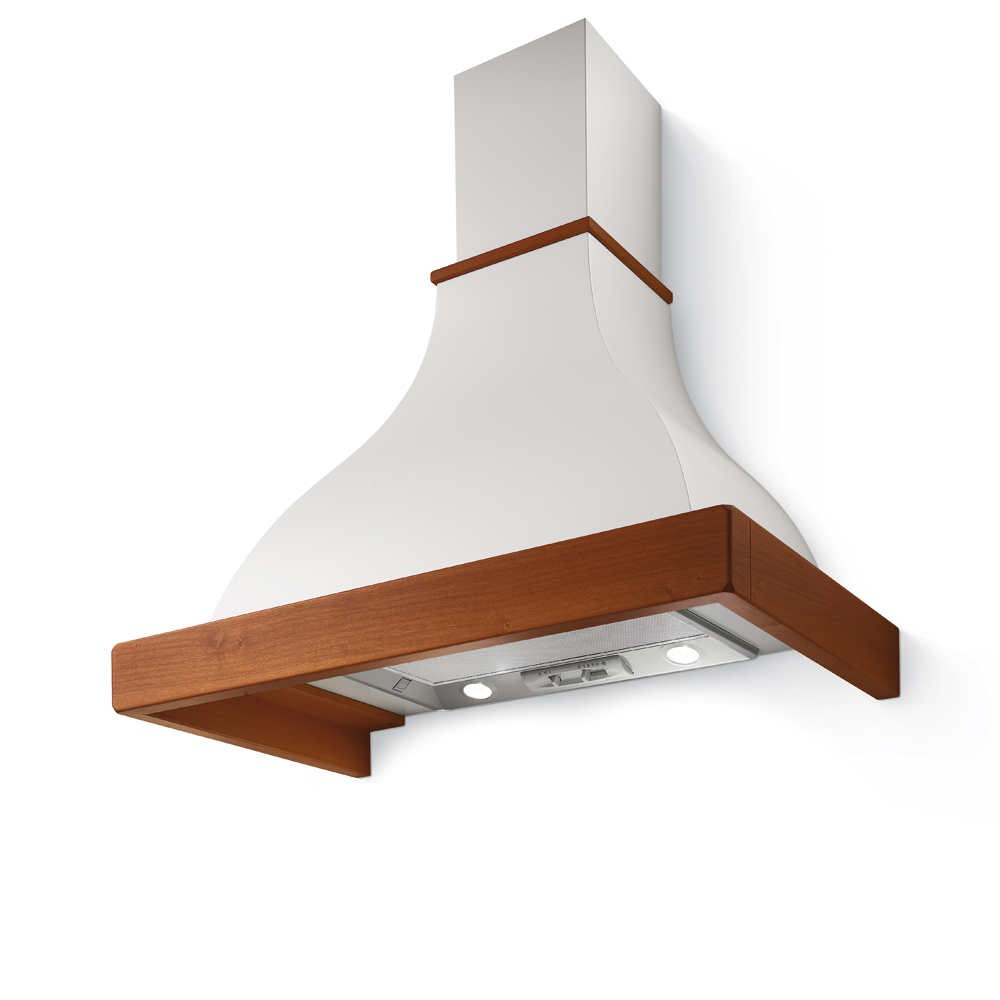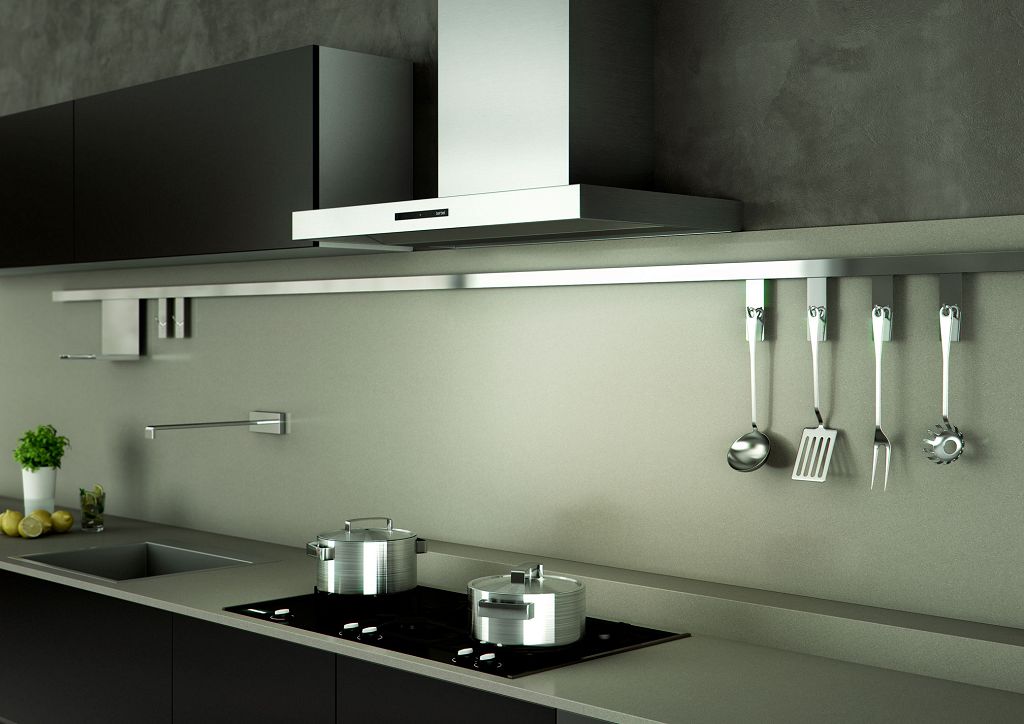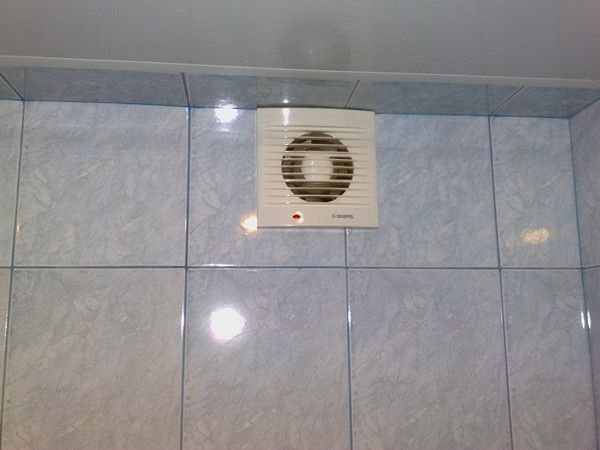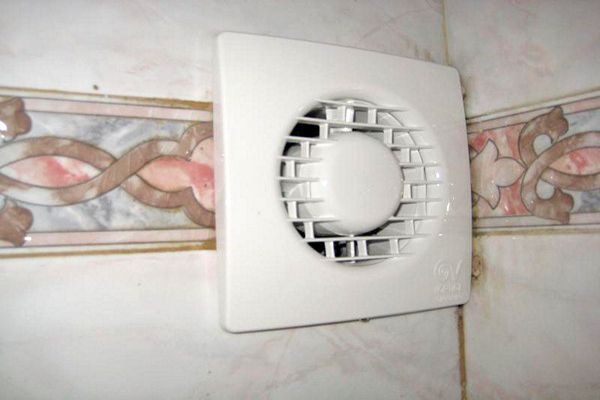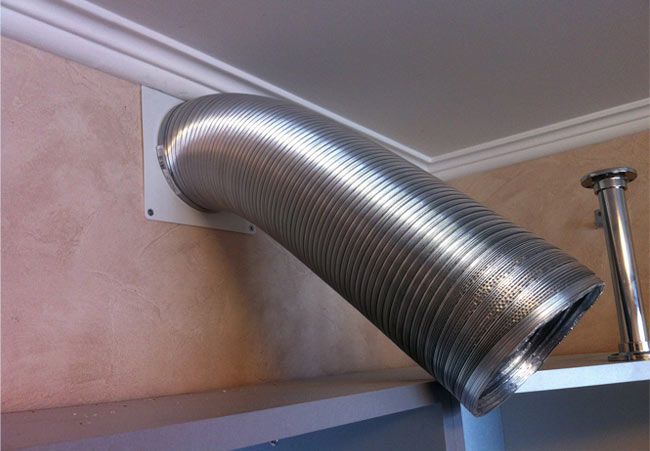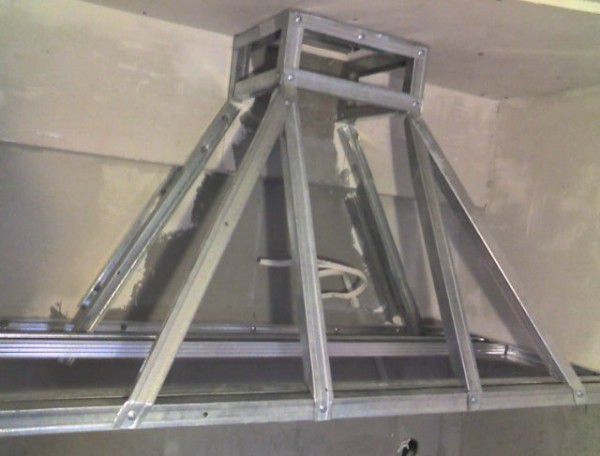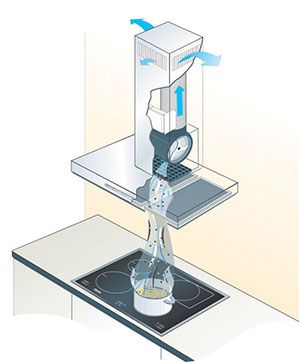Every housewife dreams of equipping her kitchen with the latest technology. Naturally, a kitchen hood with an air duct will be an indispensable component that ensures the timely outflow of the smells of the food being cooked.
Cooker hoods are made up of several structural elements. One of them is an air duct, the main function of which is to ensure the removal of air from the kitchen area. This is a special duct or pipe that delivers air from an intake exhaust device to its outlet (for example, a ventilation shaft).
It is safe to say that without an air duct, the entire ventilation system will not be able to function. However, devices that do not require air ducts have already appeared on the modern market. The air is cleaned directly in the hood using special charcoal filters. This system is not yet very popular due to the need for frequent replacement of cleaning cartridges.
- Differences between a kitchen exhaust system and ventilation
- Types of air ducts for kitchen hoods
- Air duct shape
- Material for the manufacture of air ducts
- Plastic (polyethylene, PVC and fiberglass)
- Aluminum
- Steel
- Duct configurations
- Basic rules for installing the air duct
- Installation nuances
- Ways to hide the duct
Differences between a kitchen exhaust system and ventilation
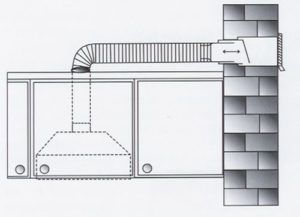
For residential premises, special sanitary standards have been established that determine the air exchange in the room. To meet these requirements, ventilation is installed in all apartments, capable of ensuring air circulation. However, for the localization of strong odors, burning and smoke, this system is unsuitable, since it works due to natural air exchange.
It is the presence of a kitchen hood that provides local intensive air removal. It is installed in places with high accumulation of unpleasant odors.
Types of air ducts for kitchen hoods
There are several types of exhaust duct classification.
They are subdivided:
- by form;
- by the material from which they are made;
- by configuration.
When choosing an air duct in the kitchen, it is necessary to take into account the entire set of parameters of this device.
Air duct shape
According to the sectional shape, they are divided into the following types:
- rectangular. These air ducts are conveniently located behind the cabinets. On sale, they exist in the form of separate sections and adapters between them. This allows you to lay any path from the exhaust device to the ventilation shaft. Suitable for kitchens with any ceiling height. They have a very aesthetic appearance. However, they have a lower performance than air ducts of other shapes;
- round. Not suitable for kitchens with low ceilings, as they are very bulky. If the outlet is rectangular, special rectangular to round adapters are required;
- oval. They have the pros and cons of round ducts.
One of the varieties of rectangular ducts are flat structures. They are compact and easy to hide from view. Available in three standard sizes:
- 110x55 mm. They are used for hoods with a capacity of no more than 300 m3 / h;
- 120x60 mm. Such air ducts are capable of passing a larger volume of air through themselves, but not more than 350 m3 / h;
- 206x60 mm. The largest air ducts. They are installed to high-performance hoods when a high degree of air purification from odors is required.
Material for the manufacture of air ducts
For the manufacture of air ducts nowadays it is customary to use the following materials.
Plastic (polyethylene, PVC and fiberglass)
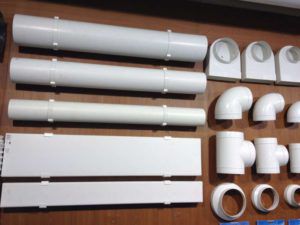
Most popular material. They are usually available in round or rectangular sections.
And if rectangular ones look more beautiful, then the ease of installation is a distinctive feature of round systems (they usually do not require special adapters to connect to the hood and ventilation grill).
Pros of plastic air ducts:
- smooth inner surface prevents the accumulation of dirt and grease inside the system;
- plastic pipes are not capable of rusting;
- light weight;
- ease of assembly. A wide variety of parts allows you to assemble air ducts of any configuration and length;
- there is no strong vibration and noise during operation;
- small price.
Minuses:
- mounting requires a variety of adapters and fittings;
- not resistant to temperature rise. At high temperatures, they can release toxic compounds into the kitchen space.
Aluminum
Quite popular material. Corrugated pipes for air ducts are made from it. Its advantages include:
- ease of installation. A versatile material for almost all occasions;
- tolerates heat well;
- low price.
Disadvantages:
- not aesthetic appearance. To make it presentable, a pipe of this type is hidden in a special box or laid inside a cabinet;
- mechanically fragile material, unstable to external influences and deformations;
- since aluminum conducts heat well, condensation may accumulate in the room where air ducts made of this material are installed.
Steel
They are made of galvanized or stainless steel. But it was galvanized models that found themselves in home use in the kitchen. However, this type of air duct is gradually becoming obsolete and every year it becomes less and less in demand.
The advantages of air ducts made of this material include:
- smooth surface. The air flow does not decrease when passing through this type of pipe. Carbon deposits, dust and other contaminants do not get stuck in them;
- easily withstand elevated temperatures, without any consequences for themselves and the environment;
- belong to the budget price category.
Disadvantages:
- in comparison with the same plastic pipes, they have significant weight. Accordingly, additional fasteners are required for wall mounting;
- additional mixtures or compositions are required to seal the channels;
- if you need to assemble an air duct of complex shape, it may be necessary to cut metal pipes;
- make a loud enough sound during operation.
Duct configurations
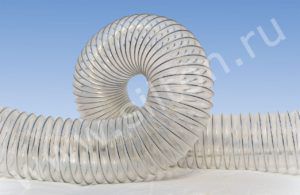
In this classification, duct pipes are divided into:
- flexible. These include corrugated channels, most often made of aluminum, but now there are models made of plastic. They can be placed at any angle. The ability to stretch or compress is an added plus. However, it is important to take into account that a poorly stretched duct strongly impedes the free movement of air, which greatly reduces the performance of the system. Another disadvantage is that the corrugated box is not recommended to be made more than three meters long. Since each additional meter reduces productivity by 5-10%;
- tough. They are made from all three materials. Ease of assembly and a smooth inner surface that prevents the accumulation of dirt are the main advantages. The price is slightly higher than that of flexible air ducts, but the ease of use compensates for this disadvantage.
Basic rules for installing the air duct
Before starting the assembly of the duct, you must first decide on its dimensions. For optimal selection of the box, it is necessary that the following requirements are met:
- the cross-sectional dimension of the duct must match the outlet of the hood. A smaller pipe diameter will lead to unnecessary noise during the operation of the system and will cause an overload of the motor;
- if the outlet differs in shape from the cross-sectional shape of the duct, a special adapter is required.
Installation nuances
When installing the exhaust duct, the following points must be taken into account:
- The number of turns of the duct should be made as little as possible, since each bend reduces the efficiency of the exhaust system by 10%. Installation of no more than three bends is recommended.
- Since the duct should be cleaned periodically, it is recommended to make it collapsible.
- When installing a corrugated aluminum box, it can be attached to the hood with ordinary clamps.
- It is unacceptable that the air duct is firmly attached to the kitchen ventilation grill. With a tight fit of the box, at a time when the ventilation system is not working, the natural air circulation is disturbed. In order to avoid this, it is required to install a special ventilation grill with openings and a built-in non-return valve.
- It is undesirable to use channels of different sizes. This will require the use of special adapters, which greatly reduces the efficiency of the entire system.
- A flat rectangular box has the most aesthetic appearance.
Ways to hide the duct
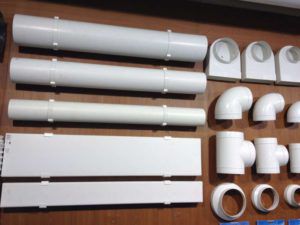
For a more presentable look of the kitchen, it is recommended to mask the duct system. For this, the following methods are used:
- are removed for the suspended ceiling. If available, all horizontal pipes can be easily removed there. For vertical sections, special casings are made, covered with the same material as the ceiling;
- decorative box. There are many modifications of such a casing, differing in shape, color and method of execution. It is even allowed to build spotlights into it;
- when buying furniture at the same time, laying the air duct is possible inside the cabinets or along their "cover";
- it is also possible to independently manufacture a plasterboard box. Further, in accordance with the design of the kitchen itself, the structure is either painted in a certain color or pasted over with wallpaper.
Currently, there are a huge number of duct models on the market for creating a kitchen exhaust system. And the question of choosing one or another type is determined not only by its design characteristics, but also by personal preference, ease of installation, and appearance. And the correct installation of the selected system will ensure a good air outflow in the required area and save the kitchen from unpleasant odors.

